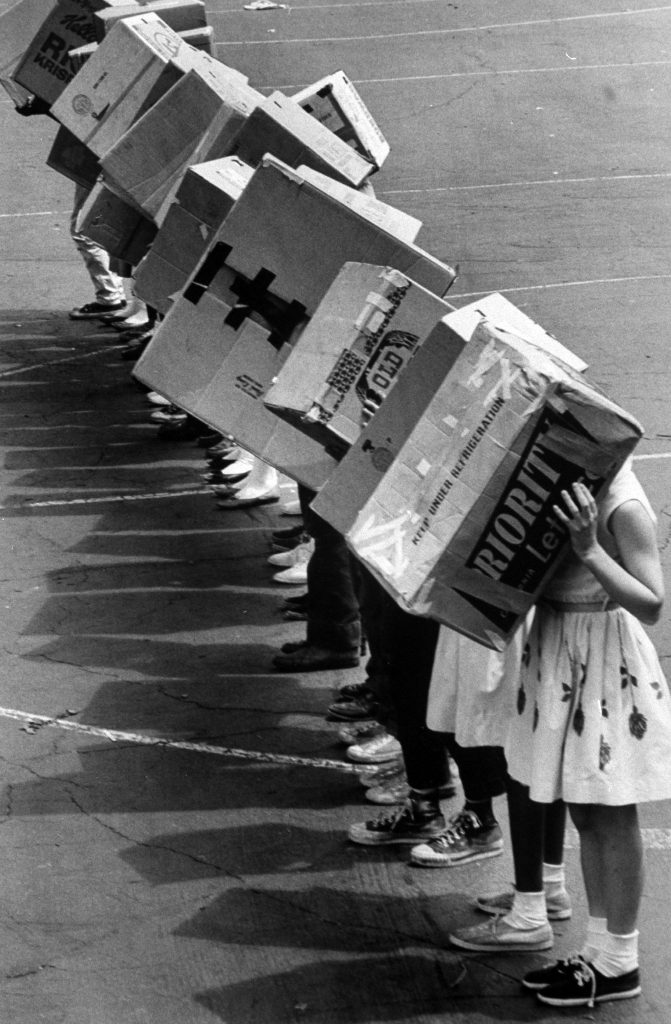Written By: Eliza Berman
The 1963 fifth grade class at the Emerson School in Maywood, Illinois took the smart approach to viewing an eclipse. Wielding cardboard boxes, the students demonstrated for LIFE’s readers how to safely look at this natural phenomenon.
During an earlier solar eclipse in 1960, hundreds of people had suffered permanent eye damage from looking directly at the sun. With help from the Illinois Society for the Prevention of Blindness, Emerson students avoided the same fate by building Sunscopes, pinhole camera-like contraptions that indirectly project an image of the sun. The magazine offered instructions for those wanting to replicate the project at home:
To build your own, get a carton and cut a hole in one side, big enough to poke your head through. Paste white paper on the inside surface that you will be facing. Then punch a pinhole into the opposite side, high enough so that the little shaft of light will miss your head. For a sharper image you can make a better pinhole by cutting a one inch square hole in the carton, taping a piece of aluminum foil over this hole and then making the pinhole in the foil. Finally, tape the box shut and cover all light leaks with black tape.
A final word to the wise from LIFE: “Don’t forget to come out for fresh air.”
Liz Ronk edited this gallery for LIFE.com. Follow her on Twitter at @LizabethRonk.

Fifth-graders at the Emerson School in Maywood, Ill. lined up with their backs to the sun, their eclipse-watching boxes over their heads.
Francis Miller The LIFE Picture Collection/Shutterstock

At work, building the eclipse-viewing contraption.
Francis Miller The LIFE Picture Collection/Shutterstock

In their Maywood, Ill. classroom John Travelstead pasted white paper inside box while Eddie Clemmons tried on the head-hole for size.
Francis Miller The LIFE Picture Collection/Shutterstock

A student poked a hole in his sunscope.
Francis Miller The LIFE Picture Collection/Shutterstock

The teacher explained how a sunscope works.
Francis Miller The LIFE Picture Collection/Shutterstock

Cutting out a head-sized hole.
Francis Miller The LIFE Picture Collection/Shutterstock

Trying on a sunscope.
Francis Miller The LIFE Picture Collection/Shutterstock

These students all tested their sunscopes at once.
Francis Miller The LIFE Picture Collection/Shutterstock

Heading outside, bearing sunscopes.
Francis Miller The LIFE Picture Collection/Shutterstock

Students with their sunscopes.
Francis Miller The LIFE Picture Collection/Shutterstock

Students with their sunscopes.
Francis Miller The LIFE Picture Collection/Shutterstock

Students and sunscopes all in a row.
Francis Miller The LIFE Picture Collection/Shutterstock

Students and sunscopes all in a row.
Francis Miller The LIFE Picture Collection/Shutterstock





















